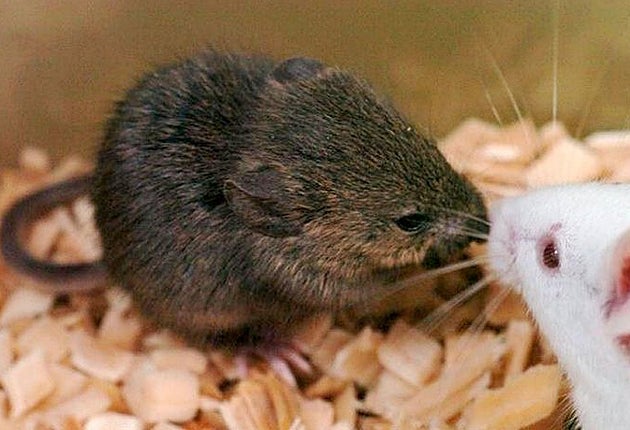Scientists 'clone mice from deep freeze bodies'

Healthy mice have been cloned from bodies kept in deep freeze for 16 years, scientists are reporting.
The breakthrough increases the possibility of "resurrecting" extinct animals such as mammoths from their frozen remains.
Until now "Dolly the Sheep"-style cloning has mostly been achieved using live donor cells, from which DNA is transferred to recipient eggs.
Cloning from thawed frozen cells was thought to be difficult, if not impossible, because their DNA would be damaged by ice crystals.
This presented a major obstacle to hopes of raising mammoths and other extinct animals preserved in ice from the dead.
A team of Japanese scientists says it has now overcome the problem by successfully producing mouse clones from mice frozen at minus 20C for up to 16 years.
After thawing out the dead mice, the researchers collected nuclei from cells in their brain tissue.
These were injected into empty eggs whose own DNA had been removed, to generate cloned embryos.
Stem cells taken from the embryos were then used in a second round of cloning. Their genetic material was inserted into denucleated eggs, to produce embryos that grew into four mouse clones.
A further nine "chimeric" mouse clones were created by mixing the cells of different embryos.
The research was reported today in the journal Proceedings of the National Academy of Sciences.
The scientists, led by Dr Teruhiko Wakayama, from the Centre for Developmental Biology in Kobe, Japan, wrote: "We have demonstrated here that healthy cloned mice and chimeric clonal mice could be obtained by nuclear transfer using donor nuclei from cells obtained from bodies frozen without cryoprotectants for up to 16 years."
The scientists said other sources of frozen nuclei, such as white blood cells, might be as useful for cloning as brain tissue.
They added: "This would increase the chances of finding tissues in good condition. At present, the lack of suitable species for recipient oocytes (eggs) and for surrogate mothers is one of the major problems that needs to be solved for the method to be applied in extinct or endangered animals.
"However, the use of interspecies nuclear transfer techniques could solve this problem and provide a possibility of reconstituting the genomes of animals from samples frozen without access to sophisticated laboratory facilities."
Join our commenting forum
Join thought-provoking conversations, follow other Independent readers and see their replies
Comments